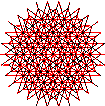
Pasive Energy Products and Heliostats. A leader in the development and manufacture of passive energy products since 1969.

 Go back to Red Rock Energy.
Go back to Red Rock Energy.

| * Zomeworks Pasive Energy Products and Heliostats. A leader in the development and manufacture of passive energy products since 1969. |
Notes on Tracking May 2008
To intercept the most sun, as for a PV panel, one follows the sun, points directly at it; when the sun moves 1o the tracker does the same.
To reflect sun onto a target, point a mirror half way between the target and the sun. The mirror moves 1deg when the sun moves 2°. The easy way to operate such a heliostat is, aim the first axis of rotation at the target and have a second axis of rotation perpendicular to the first. The first axis turns 1° for 1° thus setting up a second axis which divides angles in half by gears or linkages to hit the target. It is like a sports event with a coach; the axis pointed at the target and an athlete, the 2:1 axis who listens to the coach.. These two axes are convenient, as convenient as a world map that is re-mapped to place a pole right at your house. The new lines of latitude and longitude make computing distances to all other places on the earth simple.
A reflector hinged on a solar cooker, a skylight or a batch water heater that is as wide as its target obliges the geometer with an ideal motion which is simple and surprising. When the sun moves 2° we might expect it to turn one half the angle, 1°, to turn as with the other heliostat, but instead it turns 2/3 the angle or 1-1/3° .
Drawing of reflector and target
L = (2 * E) / 3 - T = +60°
Where:
L = ideal reflector angle, catching the most sun possible while reflecting it all on the target.
T = Angle of Target
E = Elevation of sun.
The best angles for shading are also surprising.
Take a simple example, an awning as wide as the window it shades. The awning can turn about an axis along the top of the window.
If it is a west window and it is morning we get the most light and view by having the awning turn flat against the building above the window. After noon when the sun passes into the west sky the awning should shade the window, but not obscure the sky, blocking daylight. It is ideal to keep the edge of the shadow of the awning at the base of the window. For this we move the awning 2° when the sun moves 1°.
Drawing of awning
Notice when the sun is at an elevation of 45° how much more pleasant the window is than if it had turned to face the sun.
Drawing of Good and of Not so Good Awning angles
We are likely to halt the motion of the awing.
Drawing of awning.
The sun weakens and other objects, trees or buildings, likely block much of it before it reaches an awning.
Using, or defending ourselves from, the sun we find a variety of simple relations. One to one, one to two, two to three – and last the shade two to one.
G:Internal/Managers/Steve/Notes on Tracking May 08